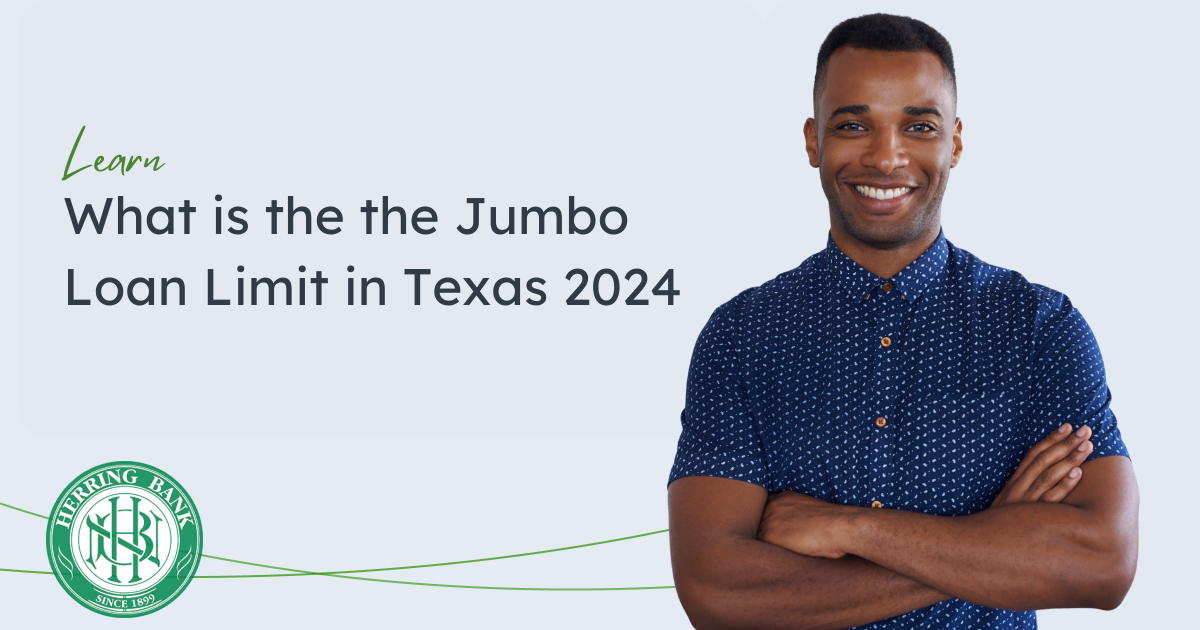
What are Physician Loans?
Considering a home purchase but daunted by the financial hurdles? Doctor mortgage loans could be a solution for doctors navigating the house-buying journey with student loan debt. With tailor-made perks like minimal down payments and waived PMI, these loans are crafted for medical professionals’ unique fiscal profiles. This article strips away the complexity, offering vital insights into the benefits, qualifications, and considerations of physician loans, guiding you to an informed decision without the fluff.
Key Takeaways
- Doctor mortgage loans provide advantages such as no PMI, low or no down payment, and flexible underwriting based on future earning potential, making homeownership more accessible for medical professionals early in their careers.
- While doctor loans offer unique benefits tailored for physicians, they can come with higher interest rates and the potential risk of overleveraging on a home purchase, necessitating careful financial planning and consideration of long-term implications.
- Physicians must assess all financing options, including conventional and FHA loans, and calculate the long-term financial impact using tools like mortgage calculators or seeking advice from financial planners specialized in real estate investment.
Understanding Physician Mortgage Loans
Physician mortgage loans, also known as doctor mortgage loans, cater specifically to medical professionals. These loans are recognized for considering the high future earning potential of doctors when determining eligibility and loan terms. So, while the average medical school debt can be a significant barrier to homeownership, physician mortgage loans aim to address this challenge.
Such loans offer a host of benefits, including:
- low-interest rates
- minimal or no down payments
- no requirement for Private Mortgage Insurance (PMI) typically needed for loans with less than a 20% down payment
This enhances the purchasing power for physicians, making homeownership a more realistic possibility.
Flexible underwriting is another attractive feature of these loans. For instance, borrowing can be based on a physician’s signed employment contract. This showcases a particular understanding of new doctors’ high debt levels and lack of a strong job and income history. So, if you’re a medical professional seeking to buy a home, a physician mortgage loan could be your ticket to achieving that dream.
Eligibility Criteria for Physician Loans
Who then, is eligible for a physician mortgage loan? Eligibility typically extends to medical professionals such as:
- medical residents
- fellows
- attending physicians
- dentists
- veterinarians
It’s geared towards those within 7 to 10 years from their graduation from medical school. This makes it a viable option for those in the early stages of their medical careers.
Qualifying for a physician mortgage loan requires:
- Having a degree in a relevant medical field
- Having a good credit score, typically 700 or higher
- Providing a signed contract showing prospective income and ensuring student loans are either deferred or in a state of good standing
- Commencing employment within 90 days following the purchase of the home, so it’s important to secure a valid employment contract in advance.
Advantages of Choosing a Doctor Loan
Exemption from Private Mortgage Insurance (PMI) is one of the primary perks of doctor mortgage loans. This insurance is typically required for borrowers who make less than a 20% down payment on their home. By waiving this requirement, doctor loans can save borrowers between 0.3% to 1.5% of the original loan amount each year, which can accumulate to a considerable amount over the life of the loan.
Another major benefit of physician home loans is the flexibility in down payment requirements. Some options available include:
- Zero or very low down payment
- An established doctor may even finance up to $750,000 without any down payment
- Homes up to $2 million can be financed with a 10% down payment
These terms are generally more favorable than a conventional mortgage for home mortgages when compared to a conventional loan.
Recognizing the Limitations
Like any financial product, physician loans come with their own set of limitations. One of the potential downsides is the risk of purchasing a more expensive home than financially prudent. This can increase the risk of becoming house-poor, a situation where the cost of the mortgage, utilities, taxes, and maintenance stretches one’s monthly budget to the limit.
Another limitation is the interest rates. Physician loans typically carry rates that are 0.25% to 0.5% higher than standard mortgage rates, adding to the overall cost of the loan. Moreover, the variable interest rates offered with some physician loans may become a financial burden over time if they increase significantly. Therefore, it’s essential to consider these factors before deciding on a physician loan.
What to Look for in a Mortgage Lender
When it comes to physician loans, selecting the right mortgage lender is of utmost importance. It’s beneficial to go for physician loan lenders who specialize in physician mortgage loans, as they possess the expertise needed to provide advice tailored to the physician’s financial situation. They also understand market trends, regulations, and the unique needs of medical professionals.
Loan officers working with physician mortgage loans are instrumental in guiding medical doctors through tailored mortgage products and making approval decisions based on specific requirements. Look for loan terms that are particularly advantageous, such as zero down payment options, flexible ARM and fixed-rate loans, transparency, and negotiability of fees. Some lenders even offer financing options in all 50 states to support possible relocations during your medical career.
Physician Loan Alternatives
Though physician loans provide a variety of benefits, they are not the sole option available. Conventional loans, for instance, require a 20% down payment but prevent the need for PMI. They also offer access to competitive mortgage rates, lower lending costs, and conforming loan limits between $766,550 and $1,149,825. If you’re unable to make a 20% down payment, conventional financing with PMI is available and can potentially be canceled once 20%-22% equity in the home is reached.
Additional alternatives include VA loans for physicians with military service, FHA loans, and credit union mortgages. Each of these options comes with its own set of advantages and can be a viable alternative depending on your specific financial situation and needs. Your choice will ultimately depend on your long-term financial goals, the level of risk you’re comfortable with, and your specific circumstances.
Financial Implications of a Physician Home Loan
The decision to apply for a physician home loan should not be made lightly. While physician loans often waive the requirement for private mortgage insurance (PMI), this could be neutralized by increased interest rates, resulting in elevated long-term costs compared to conventional loans with PMI and a 20% down payment.
That’s why it’s important for physicians to carefully plan their budget to accommodate mortgage payments. Taking into consideration the long-term commitment and an amortization schedule that details yearly principal and interest repayments across the loan’s term is crucial. Additionally, refinancing a physician loan to a lower interest rate could lead to substantial interest savings over the loan’s lifespan, which can enhance cash flow for other financial goals and help align with a physician’s long-term financial strategy.
Monthly Mortgage Payment Breakdown
When considering a physician mortgage, it’s vital to comprehend the breakdown of your monthly mortgage payment. The total monthly mortgage payment typically includes:
- Principal
- Interest
- Property taxes
- Homeowner’s insurance
Homeowners association (HOA) fees may also be an additional cost.
The principal portion of the mortgage payment is the money that goes towards paying down the actual loan amount borrowed. Interest, on the other hand, is charged on the remaining loan balance and is part of the monthly mortgage payment. Over time, as the principal balance is paid down, the interest progressively decreases. Property taxes and homeowner’s insurance may be included in the monthly mortgage payment via an escrow account or can sometimes be paid directly by the homeowner separately from the mortgage payment.
The Impact of Student Loan Debt on Financing
Many medical professionals are significantly concerned about student loan debt. Conventional mortgages typically require a debt to income ratio of 43% or less, a challenging threshold for physicians with substantial student loan debt. However, physician mortgage loans often provide a more lenient debt to income ratio, allowing for rate locks and potential financing even with high DTI ratios.
Moreover, physician mortgages typically factor in the monthly amount paid through an Income-Driven Repayment Plan (IDR) rather than the full loan balance for DTI calculations. While this can offer immediate benefits, it may lead to financial strain and ineffective student debt management if full student loan payments are not considered. Hence, managing student debt effectively is crucial for long-term financial stability.
Investment Considerations with Doctor Mortgages
Careful evaluation is required when investing in property using a physician loan. Not all properties may qualify for a physician loan, and it’s important to consider your unique circumstances. Before purchasing investment property using a physician loan, consider your long-term investment goals, the interest rates attached to physician loans, and how these factors align with your financial priorities.
Financial stability and the overall financial situation, including any student loan forgiveness programs you participate in, have a significant impact on the viability of investment property financing. Factors such as potential rental income and ongoing maintenance costs must be assessed to understand the long-term investment strategy and determine if it’s favorable.
Risk Versus Reward
Physician loans can make financing an investment property more accessible with the benefit of low or zero down payment options. However, the appeal of using a physician loan for investment purposes is tempered by the risks, including the possibility of rental income not being reliable and the duties of managing a property.
One key risk of using a physician loan for investment is facing vacancies that leave the physician fully responsible for the monthly mortgage payment without rental income to offset it. Therefore, it’s crucial to weigh the risks and rewards before deciding to use a physician loan for property investment.
Financial Planning for Property Investment
Investing in property is a significant financial decision that requires thoughtful planning. Services like Wrenne Financial Planning LLC can provide tailored advice for physicians considering real estate investments. These professionals understand the complex income streams and significant debts associated with a medical career, and can provide essential guidance for those looking into real estate investments.
Creating a comprehensive financial plan with the assistance of a financial advisor can:
- Instill financial discipline in physicians
- Help set clear financial objectives
- Employ strategies to achieve these goals
- Guide physicians through significant life milestones, aligning financial decisions with evolving personal and professional circumstances
Therefore, seeking professional advice can be a game-changer when it comes to property investment.
Preparing for the Home Buying Process with a Physician Loan
More than just applying for the loan is involved in preparing for the home buying process with a physician loan. When using a physician loan to buy a home, it’s crucial to consider the total costs of homeownership beyond the mortgage payment to avoid becoming ‘house-poor’. This includes costs like property taxes, homeowner’s insurance, and maintenance costs.
Understanding these costs will help you budget effectively and ensure you can comfortably afford your new home without stretching your finances too thin. It’s also important to remember that while a physician loan can make owning a home more accessible, it’s still a significant financial commitment that should not be taken lightly.
The Role of a Loan Officer
In the mortgage application process, loan officers have a pivotal role. They provide essential guidance to clients, helping them navigate through the process and ensuring all documentation for the mortgage application is accurate and complete. This can help speed up the approval process and increase the chances of your application being successful.
Having a loan officer who understands the intricacies of physician loans can be extremely beneficial. They can provide personalized advice and guidance based on your specific situation, helping you make informed decisions about your mortgage. So, when preparing for the home buying process, make sure you have a trusted loan officer by your side.
Understanding Closing Costs
Another crucial aspect of home buying to be aware of is closing costs. These costs can include:
- Fees for mortgage loan processing
- Home appraisal
- Home inspection
- Title services
- Prepaid expenses such as homeowner’s insurance and property taxes
- Other costs such as discount points, transfer tax, and various service fees may also apply.
Typically, the closing costs for a physician loan range from 2% to 5% of the home’s purchase price. Some of the common closing costs include:
- Loan origination fee
- Appraisal fee
- Title search and insurance
- Attorney fees
- Home inspection fee
- Prepaid interest
- Escrow deposit
Sometimes, these costs can be negotiated or rolled into the mortgage to lessen upfront expenses. However, it’s important to factor these costs into your budget when planning to buy a home.
The final step in purchasing a home with a physician loan involves reviewing and finalizing all closing documents, so make sure to understand these costs thoroughly.
Refinancing Options for Existing Physician Loans
Significant benefits can be provided by refinancing options for existing physician loans. Refinancing should be considered when physician loan interest rates drop significantly, ideally at least an entire percentage point. Switching from an adjustable rate to a lower fixed interest is another optimal time to refinance.
Experts recommend refinancing if the break-even point, where savings on payments equal the refinancing costs, can be reached within three to five years. Reducing the interest rate by at least 1% is a potential benefit of refinancing according to the 1% rule. However, it’s crucial to consider the length of the new loan when refinancing to avoid extending the overall debt repayment period.
Calculating Your Physician Loan Payments
Understanding how to calculate your physician loan payments is crucial for a prospective borrower. A physician mortgage loan calculator is an invaluable tool to estimate monthly payments, total interest paid, and the loan’s payoff date. Physicians can input variables like purchase price, loan term, start date of payments, interest rate, down payment, and household income, along with optional taxes, insurance, and maintenance estimates.
Using a physician loan calculator, doctors can:
- Compare the total lifetime cost of their mortgage to other loan options by considering interest rates and total monthly payments
- Compare fixed interest rate mortgages to adjustable-rate mortgages (ARMs)
- Simulate different interest rate scenarios for ARMs after the initial fixed period
This can provide a clear picture of your financial commitment, helping you make an informed decision.
Fixed Interest Rate vs. Adjustable Rate Mortgage
One of the key decisions to make when considering a physician loan is whether to opt for a fixed interest rate or an adjustable-rate mortgage (ARM). ARMs often offer initial lower interest rates compared to fixed-rate mortgages, with the rate subject to change after the introductory period. The interest rate of an ARM is linked to an interest rate index, meaning monthly payments can increase if the index rises, although some ARMs have caps on rate increments.
On the other hand, fixed-rate mortgages provide the peace of mind of a steady interest rate and monthly payment for the entire term of the loan, aiding in long-term budget planning. A fixed interest rate mortgage is characterized by consistent monthly payments throughout the loan term, allowing for reliable financial forecasting. However, physician mortgage loans with variable interest rates can lead to increasing monthly payments over time and potentially higher costs when compared to fixed-rate options.
When to Think Twice About Physician Mortgages
Despite the range of benefits physician mortgages offer, they may not be the best choice for everyone. These loans may lead to purchasing a more expensive home than affordable, potentially causing financial stress. The low barrier to entry for physician mortgages can result in house-poor situations due to high debt-to-income ratios.
Moreover, a fluctuating housing market can make the zero down payment options risky, potentially leaving the homeowner with negative equity. New physicians might benefit from the flexibility of renting versus the financial commitments of a mortgage, especially when uncertain about long-term location plans. Therefore, when considering a physician mortgage loan, it’s vital to examine all alternatives and select the option that aligns best with long-term goals.
Maximizing Benefits: Tips for Prospective Borrowers
To reap the benefits of physician loans to the maximum, consider the following options:
- Weigh the options of saving for a less conventional down payment versus following the traditional route of waiting until you have at least a 20% down payment before purchasing a home.
- Opt for a home purchase price no more than two times a physician’s gross income to facilitate a balance between mortgage payments and other financial obligations.
- Consider higher-earning investment opportunities as a better use of savings for physicians with a high risk tolerance instead of locking funds in a down payment.
A physician mortgage loan might be right for medical professionals wanting to maximize their retirement account contributions, by utilizing the money saved from not making a traditional down payment for investment. Finally, using a physician mortgage loan calculator is essential for understanding the financial commitment of different loan scenarios.






